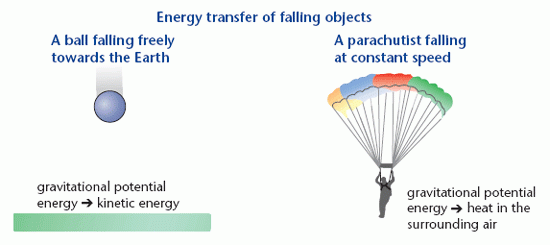Conservation of Energy
The examples of energy transfer identify some ways in which energy flows into and out of a process where work is done. Like mass and charge, energy is a conserved quantity.
The principle of conservation of energy states that: energy cannot be created or destroyed.
Take care not to confuse ‘conservation of energy’ with ‘conservation of energy resources’. Energy resources such as coal can be used up, and conservation in this context means preserving them as long as possible.
This simple statement means that energy is never used up although often the energy output from a working process is in a form which is difficult to harness to do more work. The energy output from a filament lamp, for example, is effectively lost as heat in the surroundings. Like the energy from the bus, it raises the temperature of its surroundings by such a small amount that makes it difficult to recover.
In many energy transfer processes the amount of energy at each stage cannot easily be quantified; it is difficult to put a figure on the total kinetic and potential energy of the moving parts in an engine for example. There are simple formulas for calculating the kinetic energy and gravitational potential energy of individual objects.
kinetic energy = 1?2 × mass × (speed)2
Ek = 1?2 mv2
change in gravitational potential energy = weight × change in height
ΔEp = mgΔh
The formula for change in gravitational potential energy is only valid for changes in height close to the Earth’s surface, where g has a constant value.
The formula for calculating gravitational potential energy gives the change in energy because ground level varies and so does not provide an accurate reference point for zero energy. This is not the case with kinetic energy as no movement relative to the Earth’s surface is the same the world over.
When a streamlined object is falling freely in the atmosphere at a low speed, the resistive forces are small and so little energy is transferred to the surroundings. In this case the principle of conservation of energy can be applied to the transfer of gravitational potential energy to kinetic energy. When a parachutist is falling at a constant speed conservation of energy still applies, but the energy transfer is from gravitational potential energy to heat in the atmosphere.
The principle of conservation of energy applies to all energy transfers.

